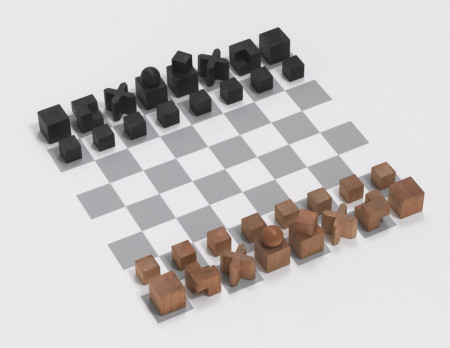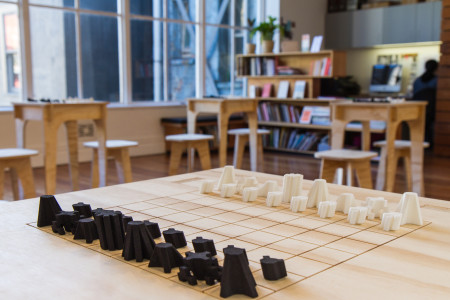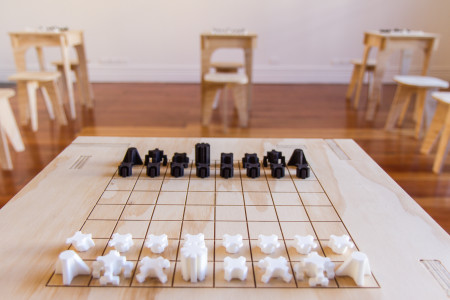 When discussing rules and fiction in games, I invariably show a picture of
When discussing rules and fiction in games, I invariably show a picture of
the beautiful Bauhaus chess set, where the superfluous ornamentation and fiction of the standard chess set has given way to shaped pieces meant to indicate how each piece moves. And it is easy to illustrate how some pieces signal well – the bishop, the rook – where others quickly fail. How are you supposed to deduce en passant from the cube that is the pawn?
Artist Nova Jiang has now one-upped Josef Hartwig considerably with her Orthogonal/Diagonal art piece. Here, Jiang not only makes a better version of the pawn in Western chess (the pawn’s diagonal attacks are now suggested by the form), the work also includes a range of Asian chess variants.


And of course – we never get to quite deduce the entirety of game rules from the shape of the pieces, but it’s just interesting to see that the basic question of how to shape chess pieces does not need to be left to the history books.

It is fascinating! But I’m wondering: isn’t this just substituting a narrative with another narrative?
It seems to me that if we used to model conflict on politics and war (see the ancient chess pieces) now we tend to model conflicts on games themselves. It is the undeniable new prestige of games in our culture that leads to abandoning the ancient narrative, now indeed superfluous, for a new one. This chess set is telling us that today we recognise a value in playing games because of their nature of being games and therefore we are ready to represent games in our games.
We shouldn’t forget that these pieces are still sings of something, they are not a direct reflection of the rules (the idea that, say, an arrow is in some manner a more transparent sign that a letter is an illusion: an animal won’t be able understand neither of them), but they do symbolize the rules, in the exact same manner a queen used to symbolize a certain kind of political power.
In this sense, this chessboard is really interesting because it reflects our way of thinking about games, and our idea that games are ontologically important. =)